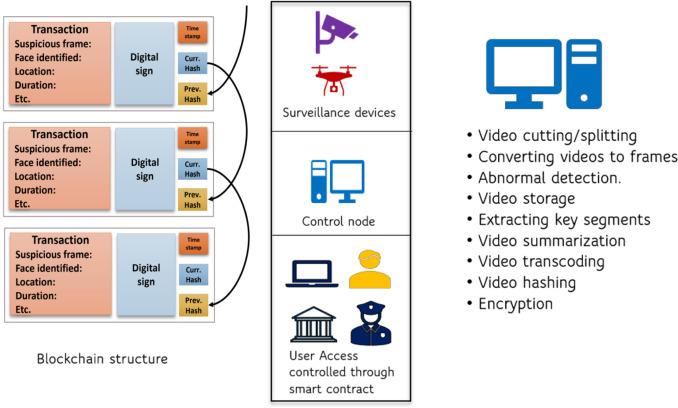How Blockchain Technology is Securing Academic Records: A New Era of Data Integrity
in an increasingly digital world,the authenticity and security of academic records have never been more critical. Blockchain technology is emerging as a revolutionary solution, offering unprecedented data integrity and trust in educational credentials.This article explores how blockchain technology is transforming the management and verification of academic records, marking the dawn of a new era in academic data security.
Understanding Blockchain Technology
At its core, blockchain is a decentralized, distributed ledger that records transactions in a secure and immutable way. Each “block” contains a list of transactions, and once added to the chain, these blocks cannot be altered retroactively. This hallmark feature of immutability makes blockchain perfect for applications where security, clarity, and traceability are paramount.
- Decentralization: No central authority controls the data, reducing the risk of single-point failure or data breaches.
- Transparency: All transactions are visible to permitted participants, boosting trust and openness.
- Immutability: data,once written,cannot be tampered with—ensuring authenticity and reliability.
Why Academic Records Need Enhanced Security
Institutions worldwide face mounting challenges in maintaining academic records’ credibility.Issues such as credential fraud, forged diplomas, data manipulation, and lengthy verification processes are prevalent. With the vast mobility of students and professionals across countries, securing educational qualifications is critical for:
- Institutions seeking to protect their reputation.
- Employers needing verified credentials for hiring decisions.
- Students desiring easy access to their achievements.
- Regulators and government bodies ensuring compliance.
how Blockchain Secures Academic Records
Blockchain employs several features that make it ideally suited for securing academic records:
1.Tamper-Proof Credential Storage
Academic records,such as degrees,transcripts,and certificates,are encrypted and recorded onto the blockchain. Once uploaded and verified,these records are immutable,ensuring that they cannot be retroactively altered or deleted.
2. Instant Verification and Validation
Anyone—employers, universities, or licensing bodies—can instantly verify a student’s credentials by accessing the blockchain, eliminating the slow process of manual verification and mitigating the risk of forged documents.
3. Students Own Their Data
Blockchain allows students to have full control over their academic achievements. Through private keys or digital wallets, individuals grant access to their records when needed, enhancing personal data privacy and eliminating unnecessary intermediaries.
4. Cross-Border and Inter-Institution Compatibility
Blockchains work across international borders, enabling seamless recognition of credentials globally. This global interoperability accelerates student mobility and collaboration between educational institutions.
Benefits of Blockchain for Academic Record Security
- Enhances Trust: Verifiable and unchangeable credentials foster trust amongst institutions, employers, and students.
- Reduces fraud: Immutable records drastically reduce cases of credential forgery or manipulation.
- Saves Time and Costs: Automates the process of issuing, storing, and verifying academic records, saving resources for both students and institutions.
- Boosts Student Empowerment: Gives students direct access and control over their lifelong learning credentials.
- Facilitates International Recognition: Standardized, secure credentials simplify global mobility for students and professionals.
case Studies: Real-World Implementations
-
MIT Digital Diplomas:
the Massachusetts Institute of Technology (MIT) launched its ”Digital Diploma” initiative, issuing blockchain-based credentials to graduates. Each diploma is cryptographically signed and stored on the blockchain, enabling instant, tamper-proof verification worldwide.
-
European Blockchain Services Infrastructure (EBSI):
The EU is creating a cross-border blockchain infrastructure for various public services, including education.EBSI enables secure academic credential verification among member states, streamlining student exchanges and mobility across Europe.
-
National University of Singapore (NUS):
NUS collaborates with global partners to issue and verify blockchain-based educational certificates, reducing fraud and improving the hiring process for Singaporean employers.
Practical Tips for Institutions Considering Blockchain Adoption
- Assess Institutional Readiness: Conduct a needs assessment to determine integration scope and resource requirements.
- Choose the Right Blockchain Platform: Select a blockchain solution compliant with local and international data protection laws.
- Start with Pilot Projects: Begin by issuing non-critical credentials to test the system before scaling up.
- Provide Stakeholder Training: Educate staff,students,and employers about the blockchain platform and its processes.
- Collaborate for Standards: partner with other institutions and governments to ensure compatibility and best practices.
First-hand Experience: Voices from the Field
“Since implementing blockchain-based credentials, our verification requests have dropped from weeks to seconds. Employers appreciate the efficiency, and our alumni value the sense of ownership over their records.”
– Registrar, Leading Asian University
“I can now instantly share my diploma with employers, wherever I apply globally. It’s liberating not to worry about lost paperwork or acceptance delays.”
– Recent Graduate,US-based Blockchain Pilot Program
Challenges and Considerations
While blockchain provides robust solutions for data integrity in academic records,challenges remain:
- Privacy & Compliance: Ensuring compliance with regulations like GDPR when handling student data.
- adoption Barriers: Resistance to change,resource constraints,and a lack of technical know-how may slow implementation.
- Interoperability: Establishing standards to ensure different blockchain systems can securely interact is crucial for widespread adoption.
Conclusion: Embracing the Future of Academic Data Security
Blockchain technology is undoubtedly ushering in a new era of academic record security and data integrity. Its inherent features—immutability, transparency, and decentralization—are transforming how educational credentials are issued, stored, and verified around the world. As more institutions adopt blockchain-based systems, the risks of credential fraud and verification bottlenecks will decrease, benefiting students, employers, and academia at large. Embracing blockchain for academic records isn’t just a tech upgrade—it’s a strategic step toward a more secure, efficient, and trustworthy educational ecosystem.

